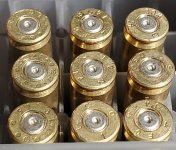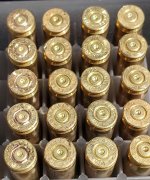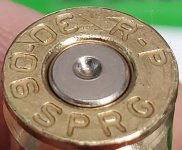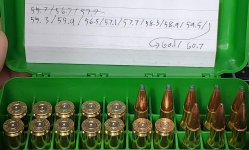Hey, So I worked up some 223 loads the other day with CFE223 and CCI standard small rifle primers. I ran up to the max of 27.4g per the hornady manual. 16" barrel, mid length gas. 5.56 chamber
The primers were slightly flattened on the surface, however there was no cratering, and the edged were still rounded, not flowed out. It did have light ejector swipes. There was no swipe at 27.2g.
The day was cooler when I tested. Being that CFE223 is no the most temperature stable powder, I don't want to work it up now and have problems this summer. I was planning to put the ammo in my lunch pail next time to keep it from getting cold.
How much stock should I be putting in the ejector swipes, vs the primers looking normal? Sorry no pix, I hope to test again next week and will get some then if there are any swipes.
The primers were slightly flattened on the surface, however there was no cratering, and the edged were still rounded, not flowed out. It did have light ejector swipes. There was no swipe at 27.2g.
The day was cooler when I tested. Being that CFE223 is no the most temperature stable powder, I don't want to work it up now and have problems this summer. I was planning to put the ammo in my lunch pail next time to keep it from getting cold.
How much stock should I be putting in the ejector swipes, vs the primers looking normal? Sorry no pix, I hope to test again next week and will get some then if there are any swipes.






